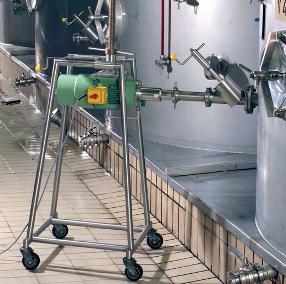As an ex-research assistant at my previous institution, I go nuts when I see excellent research dealing with my hobbies. Here is something long, but full of great tidbits :
http://ir.library.oregonstate.edu/xmlui/bitstream/handle/1957/34093/Wolfe_thesis.pdf?sequence=1
I'm sure it has been seen before, but here is the tldr :
Dry hopping is better for flavor extraction, from a tasting level to a chemical analysis level. Dry hopping in an agitated system (stirring) is essentially complete after 24 hours, no more extraction occurred after 24 hours than 4 days, and beyond.
What does this mean for a homebrewer? Maybe not much, as I doubt any of us have a system to continually stir our beer. However, dry hopping for many days may not be the best thing. Just some thoughts to consider if you want a faster turn-around on your secondary with hopped beers.
"Another goal of this work was to closely examine the initial hours of dry
hopping to see whether shorter dry hopping times can be used while still extracting an acceptable amount of hop aroma. It is apparent from these data that whole cone hops benefit from longer contact time, but pellet hops were nearly fully-extracted after 24 hours" (Wolfe 63)
What do you guys think? I can somewhat relate to this, as an impatient brewer I've done some tasting tests with my recent IPA. I dry hopped it at 7 days. Took a small 2oz sample from it each day, stored it in the fridge. After 4 days, I sampled each of them and jotted my notes down. Day 1 showed mild bitterness/flavor additions, day 2/3/4 were all essentially identical.
I just added my second dry hop addition after kegging last night and I plan on doing the same.
http://ir.library.oregonstate.edu/xmlui/bitstream/handle/1957/34093/Wolfe_thesis.pdf?sequence=1
I'm sure it has been seen before, but here is the tldr :
Dry hopping is better for flavor extraction, from a tasting level to a chemical analysis level. Dry hopping in an agitated system (stirring) is essentially complete after 24 hours, no more extraction occurred after 24 hours than 4 days, and beyond.
What does this mean for a homebrewer? Maybe not much, as I doubt any of us have a system to continually stir our beer. However, dry hopping for many days may not be the best thing. Just some thoughts to consider if you want a faster turn-around on your secondary with hopped beers.
"Another goal of this work was to closely examine the initial hours of dry
hopping to see whether shorter dry hopping times can be used while still extracting an acceptable amount of hop aroma. It is apparent from these data that whole cone hops benefit from longer contact time, but pellet hops were nearly fully-extracted after 24 hours" (Wolfe 63)
What do you guys think? I can somewhat relate to this, as an impatient brewer I've done some tasting tests with my recent IPA. I dry hopped it at 7 days. Took a small 2oz sample from it each day, stored it in the fridge. After 4 days, I sampled each of them and jotted my notes down. Day 1 showed mild bitterness/flavor additions, day 2/3/4 were all essentially identical.
I just added my second dry hop addition after kegging last night and I plan on doing the same.




